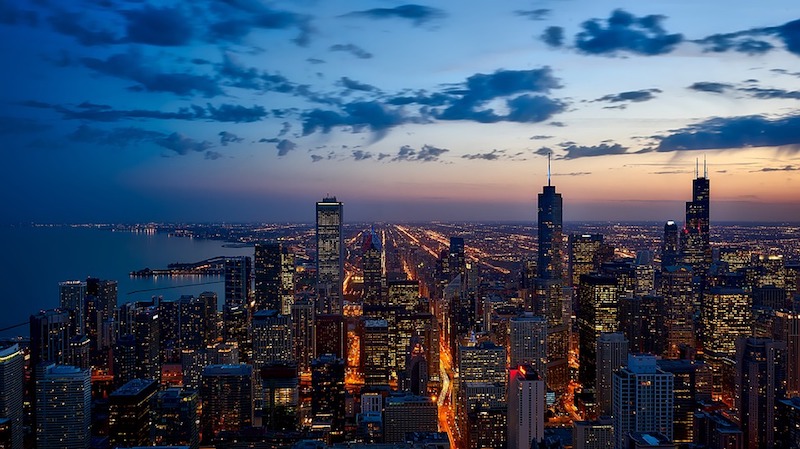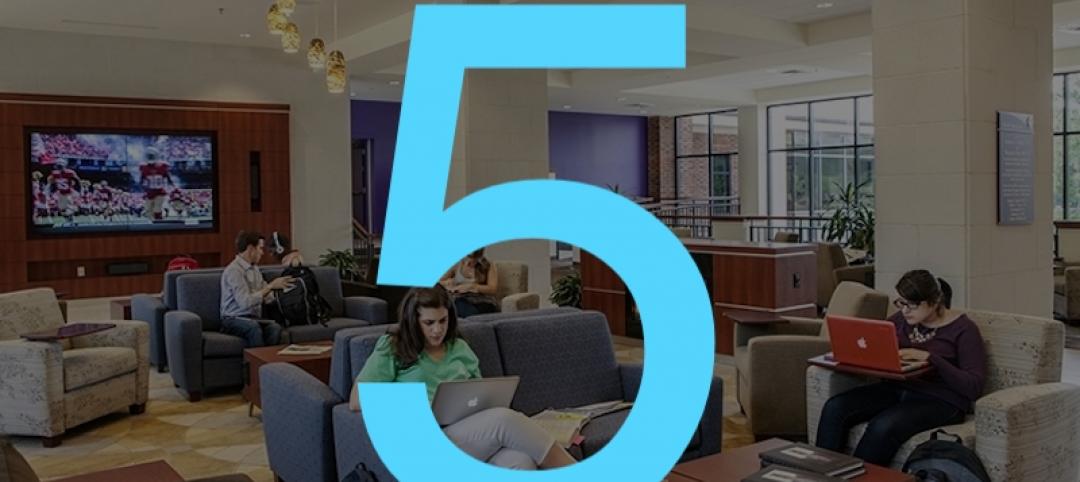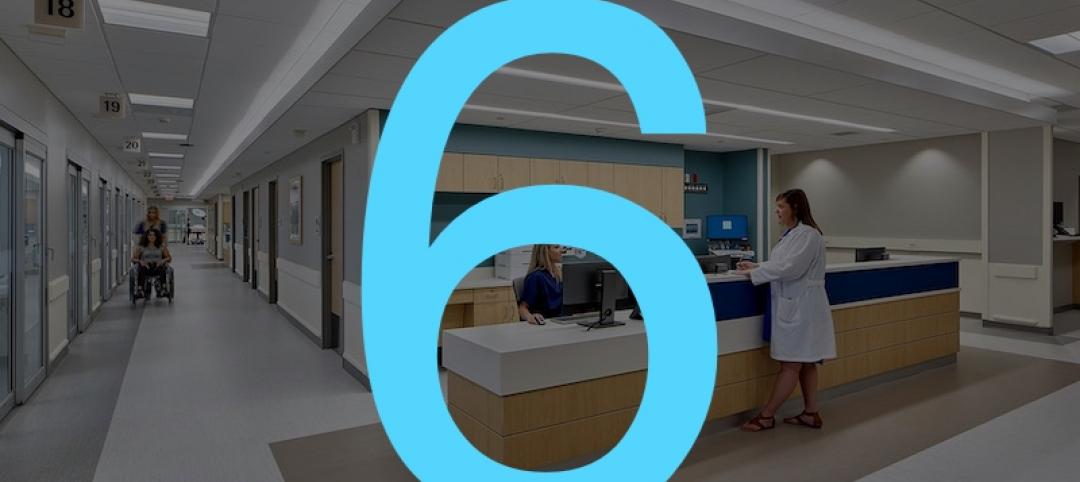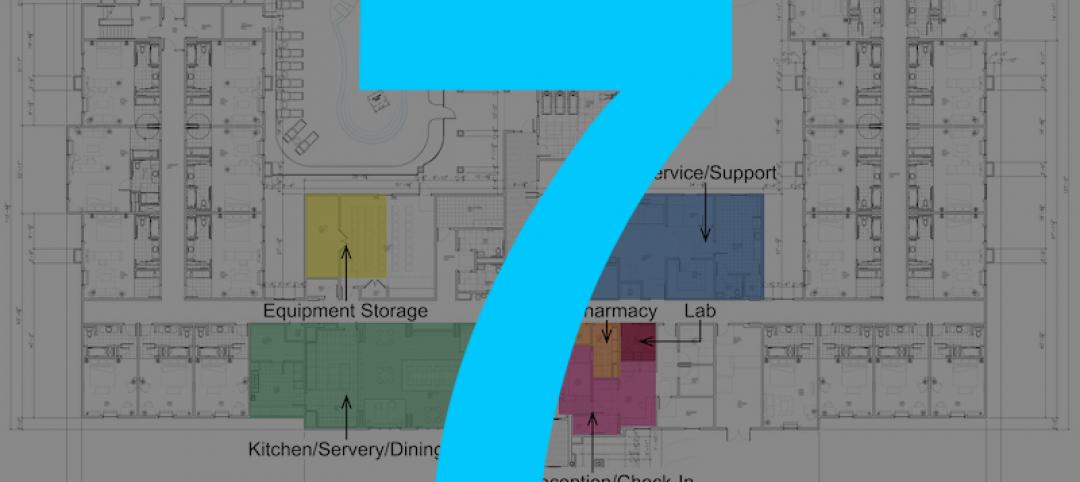The U.S. Green Building Council (USGBC) released its annual list of Top 10 States for LEED (Leadership in Energy and Environmental Design). Illinois topped the list, which ranks states based on the number of LEED certified square feet per person. The Top 10 states for LEED are home to 128 million Americans and together include more than 468 million gross square feet of LEED-certified space. Buildings that are LEED-certified create healthier spaces for people, as well as use less energy and water, reduce carbon emissions and save money for families, businesses and taxpayers.
“Over the past 25 years, the U.S. Green Building Council, its member companies and the green building community have come together to make our planet stronger, greener and more sustainable through LEED,” said Mahesh Ramanujam, president and CEO, USGBC. “These Top 10 states are examples of how we can create lasting, measurable change and improve the quality of life for everyone in our communities. A better future requires a universal living standard that leaves no one behind—and that future would simply not be possible without the extraordinary work being done in these states.”
As the number one state for LEED certification in 2018, Illinois certified 172 green building projects representing 5.31 square feet of LEED-certified space per resident. This is the first time Illinois has taken the top spot since 2015. Washington and Texas also made triumphant returns to the Top 10 securing the highest rankings in each states’ history. In addition, Colorado made notable strides in its LEED activity moving from number 10 in 2017 to number six on this year’s list. The Top 10 list is based on 2010 U.S. Census data and includes commercial and institutional green building projects certified throughout 2018. The full rankings are as follows.
2018 Top 10 States for LEED
Rank State Certified Gross Square Footage (GSF) GSF Per Capita Number of Projects Certified
1 IL* 68,133,942 5.31 172
2 MA* 34,718,212 5.30 122
3 WA 28,555,753 4.25 137
4 NY* 72,881,287 3.76 214
5 TX 88,404,993 3.52 277
6 CO* 17,042,295 3.39 114
7 HI* 4,504,287 3.31 20
8 VA* 25,348,631 3.17 136
9 CA* 112,388,968 3.02 521
10 MD* 16,869,680 2.92 113
** DC 37,147,538 61.74 145
*Included in 2017 Top 10 States for LEED list
**Washington, D.C. is not ranked as it is a federal district, not a state
USGBC calculates the list using per capita figures to allow for a fair comparison of the level of green building taking place among states with significant differences in population and number of overall buildings. Notable projects that certified in each state in 2018 include:
• llinois: Northwestern Medicine Lake Forest Hospital is LEED Silver and part of a redeveloped campus that opened in March 2018 with over 700 physicians providing primary, specialty and emergency care;
• Massachusetts: Dr. Martin Luther King, Jr. School, LEED Platinum, served as a prototype for the Cambridge Green Schools Initiative and changed the way the District thinks about building energy while also using its design as a teaching tool for students;
• Washington: The LEED Platinum Seattle Fire Station 22 was designed to support the wellbeing of its firefighters while finding ways to reuse and conserve non-potable water to meet the station’s needs;
• New York: Albany Damien Center Residences is a LEED Gold housing project that has provided over 400 chronically homeless people living with HIV and AIDS with long-term housing stability;
• Texas: The LEED Silver Austin Animal Kennel expanded its facility to meet the city’s growing “No Kill” community and provides an additional 44 kennel spaces, as well as play yards and adoption rooms;
• Colorado: Jones Hall at the Colorado School for the Deaf and Blind is a historic building that achieved LEED Gold and provides a place for visiting families to stay as well as a repository of resources for students across the state;
• Hawaii: Hawaii Convention Center achieved LEED Gold and is focused on measuring environmental performance to improve visitor experience and uses Arc to track its sustainability efforts;
• Virginia: Operation Smile’s Global Headquarters used LEED to reflect its own commitment to make the world a better place during the construction of its new LEED Gold office in Virginia Beach;
• California: The Jet Propulsion Laboratory (JPL) achieved LEED Gold for Building 301 using LEED v4.1; LEED is used across JPL’s campus to compare progress and continuously improve building performance while also meeting federal guiding principles for sustainable buildings as a contractor to NASA; and
• Maryland: The Merriweather Post Pavilion Stagehouse is a LEED Silver home-away-from-home for touring artists playing at the iconic venue and reflects many of the artists environmental values.
While the Top 10 recognizes progress at the building level, LEED is also now used to measure sustainability performance at the city and community levels. This year, nine of the Top 10 states are also home to LEED-certified cities and communities, including Chicago, Seattle, Austin, San Diego County and more. There are currently more than 137 registered and certified LEED cities and communities around the world, representing more than 50 million people.
Despite Washington, D.C. not appearing in the official Top 10 list because of its status as a federal territory, it has consistently led the nation and in 2018 certified 61.74 square feet of space per resident across 145 green building projects. The nation’s capital has a strong legacy of sustainability leadership and in 2017 was the first city in the world to be LEED-certified.
Research shows green building will continue growing through 2021. Client demand remains the top reason to build green in the U.S. and occupant health and well-being emerged as the top social factor. Through LEED, USGBC pushes the market toward higher performing buildings that also improve quality of life. Recently, USGBC introduced LEED v4.1, the latest update to the rating system, and opened registration for existing buildings (LEED v4.1 O+M), new construction (LEED v4.1 BD+C) and interiors (LEED v4.1 ID+C). LEED v4.1 emphasizes human health and integrates performance metrics using Arc to encourage ongoing tracking. There are currently more than 96,275 registered and certified LEED projects in 167 countries and regions.
The impact of buildings, cities and communities on people continues to be a priority for USGBC and across industries. In an effort to expand USGBC’s global green building efforts and ensure that LEED is not only the de facto leadership standard, but also the pre-eminent living standard, USGBC launched the Living Standard campaign at 2018’s Greenbuild in Chicago. Focused on the belief that storytelling can lead to a more sustainable world, the campaign aims to highlight stories – big and small – that capture how USGBC, LEED and other sustainability programs are raising the quality of life for people around the world. By visiting livingstandard.org, individuals and companies can join the campaign and submit stories.
Related Stories
Market Data | Apr 10, 2020
5 must reads for the AEC industry today: April 10, 2020
Designing for the next generation of student life and a mass timber Ramada Hotel rises in British Columbia.
Market Data | Apr 9, 2020
7 must reads for the AEC industry today: April 9, 2020
Urine could be the key to building in outer space and how to turn a high school into a patient care center in just over two weeks.
Market Data | Apr 8, 2020
6 must reads for the AEC industry today: April 8, 2020
Stantec discusses how hospitals can adapt buildings to address worst-case scenarios and FXCollaborative Architects tells us why cities will survive the pandemic.
Market Data | Apr 7, 2020
7 must reads for the AEC industry today: April 7, 2020
Leo A Daly's Hotel2Hospital prototype takes shape, while the number of delayed projects reaches 2,550 in the U.S. amid coronavirus pandemic.
Market Data | Apr 3, 2020
COVID-19 cuts nonresidential construction employment in March
The construction unemployment rate was 6.9% in March, up 1.7 percentage points from the same time one year ago.
Market Data | Apr 1, 2020
February’s construction spending decline indicates what’s to come
Private nonresidential spending declined 2% on a monthly basis and is down 0.7% compared to February 2019.
Market Data | Mar 26, 2020
Architects taking action to support COVID-19 response
New AIA task force will offer insights for adapting buildings into healthcare facilities.
Market Data | Mar 26, 2020
Senate coronavirus relief bill's tax and lending provisions will help construction firms, but industry needs additional measures
Construction officials say measure will help firms cope with immediate cash flow crunch, but industry needs compensation for losses.
Market Data | Mar 25, 2020
Engineering and construction materials prices fall for first time in 40 months on coronavirus impacts, IHS Markit says
Survey respondents reported falling prices for five out of the 12 components within the materials and equipment sub-index.

















